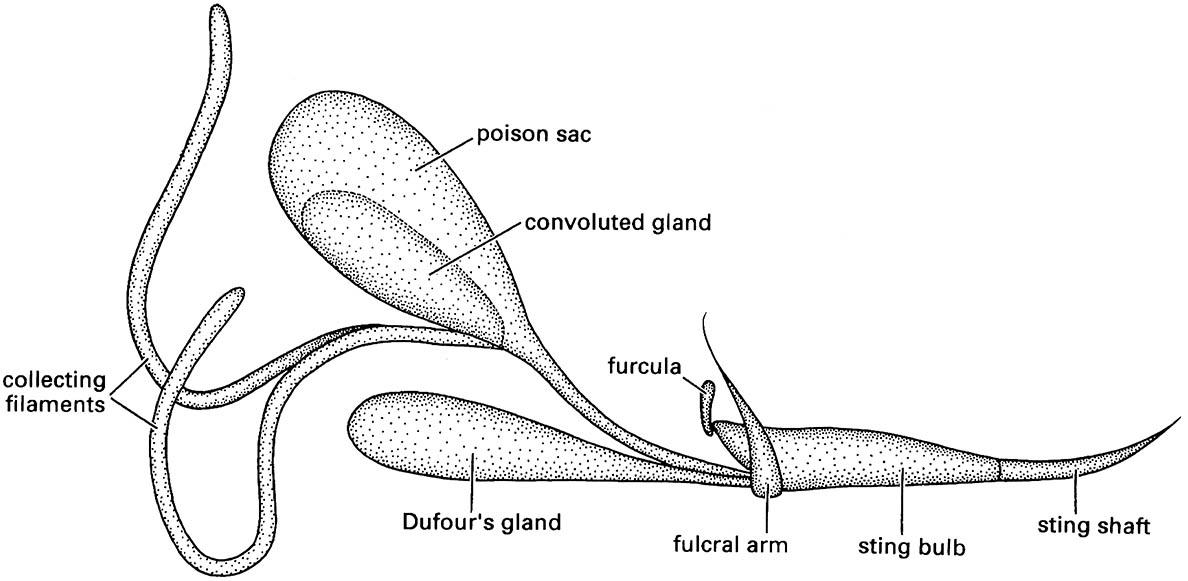15.2.1. Insect venoms
Some people’s earliest experiences with insects are memorable for their pain. Although the sting of the females of many social hymenopterans (bees, wasps, and ants) can seem unprovoked, it is an aggressive defense of the nest. The delivery of venom is through the sting, a modified female ovipositor (Fig. 14.11).
The honey-bee sting has backwardly directed barbs that allow only one use, as the bee is fatally damaged when it leaves the sting and accompanying venom sac in the wound as it struggles to retract the sting. In contrast, wasp and ant stings are smooth, can be retracted, and are capable of repeated use. In some ants, the ovipositor sting is greatly reduced and venom is either sprayed around liberally, or it can be directed with great accuracy into a wound made by the jaws. The venoms of social insects are discussed in more detail in section 14.6.

(After Hermann & Blum 1981)

